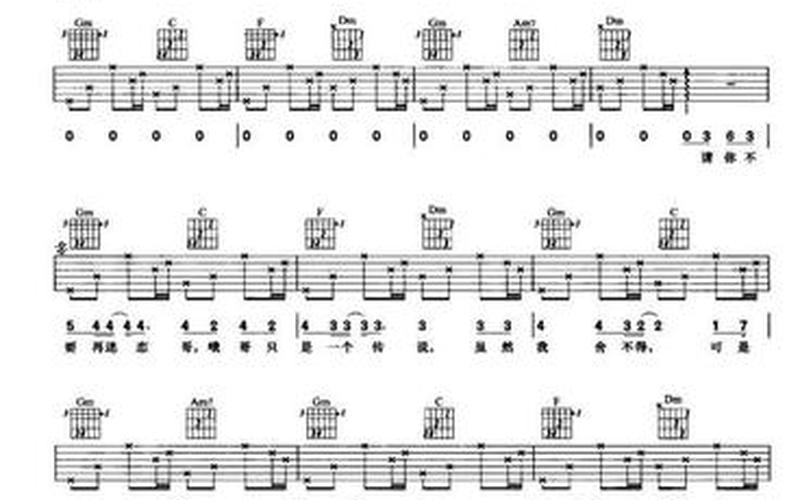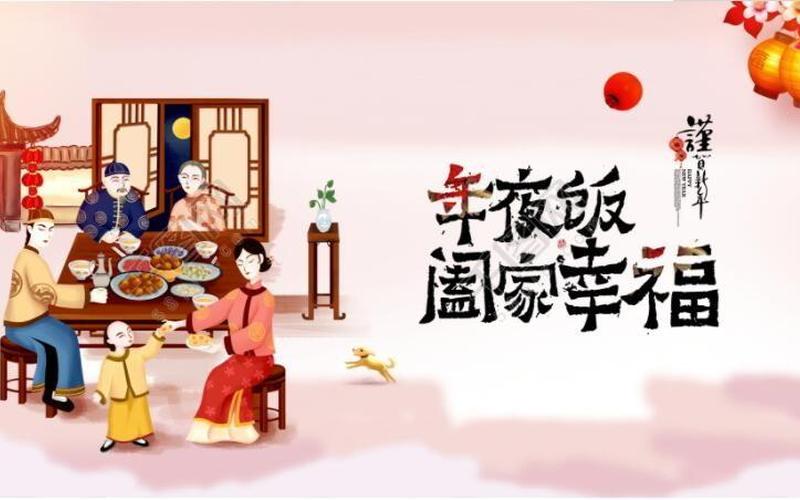counterpart的含义是什么?
counterpart是一个英语单词,意思是副本,配对物。名词复数:counterparts
中文翻译与解释
n.1.【法律】(正副两份中的)一份,(尤指)副本;极相似的人[物],一对中之一个,骑缝图章的一半。2.相对物;变体,变型。3.【音乐】对应部。短语和例子Ithasnocounterpartintheworld.举世无双。aduplicatecopy同义词:similitude,twin,apersonorthinghavingthesamefunctionorcharacteristicsasanother同义词:oppositenumber,vis-a-vis,
counterpart的例句1.TheForeignSecretarytelephonedhisItaliancounterparttoprotest.外交部长致电意大利外长表示 *** 。2.TheFinnishorganizationwasverydifferentfromthatofitscounterpartsintherestoftheNordicregion.芬兰的这一机构和北欧其他国家的同类机构迥然不同。3.ThePresidenthadtalksduringabriefstopoverinLi *** onwithhisPortuguesecounterpart总统在里斯本作短暂停留期间和葡萄牙总统进行了会谈。4.TheSecretaryofStateandhisRussiancounterpartmettotrytonaildowntheelusiveaccord.美国国务卿和俄罗斯外交部长进行了会晤,试图敲定这项难以达成的协议。5.Itisnotauniqueinstance,buthasitscounterpart.无独有偶。
counterpart的常见句型用作名词(n.)1.Themanagerphonedhiscounterpartintheotherfirm.经理给另一家公司的经理打了 *** 。2.Deep-seavalleysarethecounterpartsofthemountainchains.深海里的峡谷相当于陆地上的山脉。
counterpart造句
1、Their goal is to create a car capable of trumping its gasoline-powered counterpart by 2010.
他们的目标是创造一辆能在2010年超越燃油汽车的电动汽车。
2、A four-bar-width bar code said to be the European counterpart of UPC.
一种四条宽的条形码,是通用产品代码(UPC)在欧洲的变型。
3、It sends a mixed message, and your counterpart gets to choose what signals to read.
它传递了一个复杂的信息,而你的对手可以选择解读什么信号。
下面分享相关内容的知识扩展:
请问Love and logic: The story of a fallacy的翻译是什么?
Love and logic: the story of a fallacy(爱情与逻辑:谬误的故事)翻译如下:
I had my first date with Polly after I mad the trade with my roommate Rob. That year every guy on campus had a leather jacket, and Rob couldn’t stand the idea of being the only football player who didn’t, so he made a pact that he’d give me his girl in exchange for my jacket. He wasn’t the brightest guy. Polly wasn’t too shrewd, either.
在我和室友罗伯的交易成功之后,我和波莉有了之一次约会。那一年校园里每个人都有件皮夹克,而罗伯是校足球队员中唯一一个没有皮夹克的,他一想到这个就受不了,于是他和我达成了一项协议,用他的女友换取我的夹克;他可不那么聪明,而他的女友波莉也不太精明。
But she was pretty, well-off, didn’t dye her hair strange colors or wear too much makeup. She had the right background to be the girlfriend of a dogged,brilliant lawyer.IF I could show the elite law firms I applied to that I had a radiant,well-spoken counterpart by my side,I just might edge past the competition.
但她漂亮而且富有,也没有把头发染成奇怪的颜色或是化很浓的妆。她拥有合适的家庭背景,足以胜任一名坚忍而睿智的律师的女友。如果我能够让我所申请的顶尖律师事务所看到我身边伴随着一位光彩照人、谈吐优雅的另一半,我就有可能在竞聘中以微弱优势获胜。
“Radiant”she was already. I could dispense her enough pearls of wisdom to make her“well-spoken”.
“光彩照人”,她已经是了。而我也能施予她足够多的“智慧之珠”,让她变得“谈吐优雅”。
After a banner day out,I drove until we were situated under a big old oak tree on a hill off the expressway.What I had in mind was a little eccentric.I thought the venue with a perfect view of the luminous city wold lighten the mood.We stayed in the car, and I turned down the stereo and took my foot off the brake pedal.”
在一起外出度过了美好的一天之后,我驱车来到了高速公路旁一座小山上一棵古老的大橡树下。我的想法有些怪异,而这个地方能够俯瞰灯火灿烂的城区,我觉得它会使人的心情变得轻松。我们待在车子里,我调低了音响并把脚从刹车上挪开。
What are we going to talk about?”she asked.
“我们要谈些什么?”她问道。
“Logic.”
“Cool,”she said over her gum.
“The doctrine of logic,”I said,”is a staple of clear thinking.Failures in logic distort the truth ,and some of them are well known.First let’s look at the fallacy Dicto Simpliciter.”
“Great,”she agreed.
“Dicto Simpliciter means an unqualified generalization. For example : Exercise is good.Therefore,everybody should exercise.”
She nodded in agreement.
“逻辑学。”
“好酷啊,”她一边嚼着口香糖一边说
“逻辑学的原理,”我说道,“即清晰思考的主要原则。逻辑上出现的问题会歪曲事实,其实有些还很普遍。我们先来看看一种叫做‘绝对判断’的逻辑谬误。”
“好啊,”她表示同意。
“‘绝对判断’是指在证据不足的情况下所作出的推断,比方说:运动是有益的,所以每个人都应该运动,”
她点头表示赞同。
I could see she was stumped.”Polly,”I explained,”it’s too simple a generalization. If you have,say,heart disease or extreme obesity, exercise is bad,not good.Therefore, you must say exercise is good for most people.”
我看得出她没弄明白。“波莉,”我解释说,“这个推荐太过简单化了。如果你有心脏病或者超级肥胖症什么的,运动就变得有害而不是有益。所以你应该说,运动对大多数人来说是有益的。”
“Next is Hasty Generalization.Self-explanatory,right?Listen carefully:You can’t speak French.Rob can’t speak French.Looks like nobody at this school can speak French.”
“接下来是‘草率结论’。这似乎不言自明,对吧?仔细听好了:你不会说法语,罗伯不会说法语,那么这所学校里好像是没有人会说法语。”
“Really?”said Polly,amazed.”Nobody?”
“This is a fallacy,”I said.”The generalization is reached too hastily. Too few instances support such a conclusion.”
She seemed to have a good time. I could safely say my plan was underway.I took her home and set a date for another conversation.
Seated under the oak the next evening I said,”Our first fallacy tonight is called Ad Misericordiam.”
She nodded with delight.
“Listen closely,”I said .”A man applies for a job.When the boss asks him what his qualifications are,he says he six children to feed.”
“Oh,this is awful,awful,”she whispered in a choked voice.
“yes,it’s awful,”I agreed,”but it’s no argument.The man never answered the boss’s question.Instead he appealed to the boss’s sympathy-Ad Misericordiam.”
“是吗?”波莉吃惊地说。“没有人吗?”
“这也是一种逻辑谬误。”我说,“这一结论太草率了,因为能够支持这一结论的例证太少了。”
她似乎学的很开心,而我也可以放心地说我的计划正在稳步推进中。我把她送回家,并且定下了下一次约会交谈的日子。
第二天晚上,坐在那棵橡树下,我说:“今天晚上我们要谈的之一个逻辑谬论叫做‘文不对题’。”
她高兴地点了点头。
“听好了,”我说,“有个人去申请工作,当老板问他有什么应聘资格时,他说他有六个孩子要抚养。”
“哇,这太可怕了,太可怕了。”她哽咽着轻声说道。
“对,是挺可怕的,”我表示赞同地说,“但这不是理由。这个人根本没有回答老板的问题,而只是在博取老板的同情,这就是‘文不对题’。”
She blinked,still trying hard to keep back her tears.
“Next,”I said carefully,”we will discuss False Analogy.An example.students should be allowed to look at their textbooks during exams,because surgeons have X-rays to guide them during surgery.”
“I like that idea,”she said.
“Polly,”I groaned,”don’t derail the discussion.The inference is wrong.Doctors aren’t taking a test to see how mach they have learned ,but students are.The situations are altogether different.You can’t make an *** ogy between them.”
“I still think it’s a good idea,”said Polly.
她眨着眼睛,仍在竭力的忍住眼泪。
“接下来”,我小心的说,“我们来讨论‘错误类比’。举个例子:学生考试时应当允许看课本,因为外科医生在做手术时可以看x光片。”
“我喜欢这个主意,”她说。
“波莉,”我抱怨道,“别打岔,这一推论是错误的。医生们不是在参加考试以检查他们学到了多少,而学生却是,他们的情况完全不同,你不能将他们类比。”
“我仍然认为这是一个好主意,”波莉说。
10.With five nights of diligent work,I actually made a logician out of Polly.She was an *** ytical thinker at last.The time had come for the conversion of our relationship from academic to romantic.
经过了五个晚上的辛勤努力,我竟然真的将波莉打造成了一个逻辑行家,她总算能分析思考了。现在应该是时候让我们的关系从学术向浪漫发展了。
“Polly,”I said when next we sat under our oak,”tonight we won’t discuss fallacies.”
“Oh?”she said,a little disappointed.
Favoring her with a grin, I said ,”we have now spent five evenings together.We get along pretty well .We make a pretty good couple.”
“Hasty Generalization,”said Polly brightly.”Or as a normal person might say,that’s a little premature, don’t you think?”
“波莉,”当我们又一次坐在那棵橡树下的时候我对她说,“今晚我们不讨论逻辑谬论了。”
“哦?”她回答说。有一点失望。
我赞许地对她笑了笑,说:“我们在一起已经度过了五个晚上,相互之间挺合得来,我们是蛮相配的一对。”
“草率结论,”波莉伶俐地说,“或者是按一般人的说法,这个结论有些不成熟,你不这样认为吗?”
I laughed with amusement.She’d learned her lessons well,far surpassing my expectations,”Sweetheart.”I said, patting her hand in a tolerant manner,”five dates is plenty.After all,you don’t have to eat a whole cake to know it’s good.”
我被逗得笑了起来,她功课还真学的不错,大大超了我的预期。“亲爱的,”我开口说,同时宽容地拍了拍她的手,“五次约会已经够多了,毕竟你不需要吃掉整个蛋糕才知道它是不是好吃。”
“Fals Analogy,”said Polly promptly.”Your premise is that dating is like eating.But you’re not a cake.You’re a boy.”
“错误类比,”波莉立即回应。“你的前提是约会就如同吃东西。可你不是蛋糕,你是个男孩。”
有关Charlotte Bronte的简介,英文版1000
Charlotte Brontë, married name Mrs. Arthur Bell Nicholls, pseudonym Currer Bell (born April 21, 1816, Thornton, Yorkshire, England—died March 31, 1855, Haworth, Yorkshire), English novelist, noted for Jane Eyre (1847), a strong narrative of a woman in conflict with her natural desires and social condition. The novel gave new truthfulness to Victorian fiction. She later wrote Shirley (1849) and Villette (1853).Table Of Contents
Life.
Her father was Patrick Brontë (1777–1861), an Anglican clergyman. Irish-born, he had changed his name from the more commonplace Brunty. After serving in several parishes, he moved with his wife, Maria Branwell Brontë, and their six *** all children to Haworth amid the Yorkshire moors in 1820, having been awarded a rectorship there. Soon after, Mrs. Brontë and the two eldest children (Maria and Elizabeth) died, leaving the father to care for the remaining three girls—Charlotte, Emily, and Anne—and a boy, Patrick Branwell. Their upbringing was aided by an aunt, Elizabeth Branwell, who left her native Cornwall and took up residence with the family at Haworth.
In 1824 Charlotte and Emily, together with their elder sisters before their deaths, attended Clergy Daughters’ School at Cowan Bridge, near Kirkby Lonsdale, Lancashire. The fees were low, the food unattractive, and the discipline harsh. Charlotte condemned the school (perhaps exaggeratedly) long years afterward in Jane Eyre, under the thin disguise of Lowood; and the principal, the Rev. William Carus Wilson, has been accepted as the counterpart of Mr. Naomi Brocklehurst in the novel.
Charlotte and Emily returned home in June 1825, and for more than five years the Brontë children learned and played there, writing and telling romantic tales for one another and inventing imaginative games played out at home or on the desolate moors.
In 1831 Charlotte was sent to Miss Wooler’s school at Roe Head, near Huddersfield, where she stayed a year and made some lasting friendships; her correspondence with one of her friends, Ellen Nussey, continued until her death, and has provided much of the current knowledge of her life. In 1832 she came home to teach her sisters but in 1835 returned to Roe Head as a teacher. She wished to improve her family’s position, and this was the only outlet that was offered to her unsatisfied energies. Branwell, moreover, was to start on his career as an artist, and it became necessary to supplement the family resources. The work, with its inevitable restrictions, was uncongenial to Charlotte. She fell into ill health and melancholia and in the summer of 1838 terminated her engagement.
In 1839 Charlotte declined a proposal from the Rev. Henry Nussey, her friend’s brother, and some months later one from another young clergyman. At the same time Charlotte’s ambition to make the practical best of her talents and the need to pay Branwell’s debts urged her to spend some months as governess with the Whites at Upperwood House, Rawdon. Branwell’s talents for writing and painting, his good classical scholarship, and his social charm had engendered high hopes for him; but he was fundamentally unstable, weak willed, and intemperate. He went from job to job and took refuge in alcohol and opium.
Meanwhile his sisters had planned to open a school together, which their aunt had agreed to finance, and in February 1842 Charlotte and Emily went to Brussels as pupils to improve their qualifications in French and acquire some German. The talent displayed by both brought them to the notice of Constantin Héger, a fine teacher and a man of unusual perception. After a brief trip home upon the death of her aunt, Charlotte returned to Brussels as a pupil-teacher. She stayed there during 1843 but was lonely and depressed. Her friends had left Brussels, and Madame Héger appears to have become jealous of her. The nature of Charlotte’s attachment to Héger and the degree to which she understood herself have been much discussed. His was the most interesting mind she had yet met, and he had perceived and evoked her latent talents. His strong and eccentric personality appealed both to her sense of humour and to her affections. She offered him an innocent but ardent devotion, but he tried to repress her emotions. The letters she wrote to him after her return may well be called love letters. When, however, he suggested that they were open to misapprehension, she stopped writing and applied herself, in silence, to disciplining her feelings. However they are interpreted, Charlotte’s experiences at Brussels were crucial for her development. She received a strict literary training, became aware of the resources of her own nature, and gathered material that served her, in various shapes, for all her novels.
In 1844 Charlotte attempted to start a school that she had long envisaged in the parsonage itself, as her father’s failing sight precluded his being left alone. Prospectuses were issued, but no pupils were attracted to distant Haworth.
In the autumn of 1845 Charlotte came across some poems by Emily, and this led to the publication of a joint volume of Poems by Currer, Ellis and Acton Bell (1846), or Charlotte, Emily, and Anne; the pseudonyms were assumed to preserve secrecy and avoid the special treatment that they believed reviewers accorded to women. The book was issued at their own expense. It received few reviews and only two copies were sold. Nevertheless, a way had opened to them, and they were already trying to place the three novels they had written. Charlotte failed to place The Professor: A Tale but had, however, nearly finished Jane Eyre: An Autobiography, begun in August 1846 in Manchester, where she was staying with her father, who had gone there for an eye operation. When Smith, Elder and Company, declining The Professor, declared themselves willing to consider a three-volume novel with more action and excitement in it, she completed and submitted it at once. Jane Eyre was accepted, published less than eight weeks later (on Oct. 16, 1847), and had an immediate success, far greater than that of the books that her sisters published the same year.
The months that followed were tragic ones. Branwell died in September 1848, Emily in December, and Anne in May 1849. Charlotte completed Shirley: A Tale in the empty parsonage, and it appeared in October. In the following years Charlotte went three times to London as the guest of her publisher; there she met the novelist William Makepeace Thackeray and sat for her portrait by George Richmond. She stayed in 1851 with the writer Harriet Martineau and also visited her future biographer, Mrs. Elizabeth Gaskell, in Manchester and entertained her at Haworth. Villette came out in January 1853. Meanwhile, in 1851, she had declined a third offer of marriage, this time from James Taylor, a member of Smith, Elder and Company. Her father’s curate, Arthur Bell Nicholls (1817–1906), an Irishman, was her fourth suitor. It took some months to win her father’s consent, but they were married on June 29, 1854, in Haworth church. They spent their honeymoon in Ireland and then returned to Haworth, where her hu *** and had pledged himself to continue as curate to her father. He did not share his wife’s intellectual life, but she was happy to be loved for herself and to take up her duties as his wife. She began another book, Emma, of which some pages remain. Her pregnancy, however, was accompanied by exhausting sickness, and she died in 1855.
会计学原理-笔记-Chapter 3
Recording TransactionsThe whole process:
Analyze transactions-> Record transactions-> Summarize transactions-> Report transactions
Entries->Post->Trial Balance->Financial Report
A. Analyze Transactions
1. Transactions are recorded in:
a. General Journal 日记账 Chronological record of an organization’s transactions and how each transaction affects the balances in particular accounts
b. General Ledger 总账 Collection of all ledger accounts that supports an organization’s financial statements
c. Ledger Account(Subsidiary Ledger) 分类账 Listing of all the increases and decreases in a particular account
2. T-Account
Account:An organized format used by companies to accumulate the dollar effects of
transactions
a.account format: T-Account
Left side: increase Right side: decrease
b.T-Account:
Visualization of every account; A tool used to represent an account.
The left side of the T-account is always the debit side.
The right side of the T-account is always the credit side.
c. debit & credit
Debits are simply entries on the left.
Credits are simply entries on the right.
这个定义仿佛在逗我。。。 对我来说基本上就是区分正负的约定
d.Expanded Accounting Equation:
Each account uses T-Account format.
3. Double-Entry Accounting
There must be at least one debit and one credit. The (total) debits must always equal the (total) credits.
B. Record Transactions
1. Journal
Journal : A chronological record of all business activities. A book of original entry . Transactions are first entered in this book to show which accounts should be debited and which should be credited.
Rules:
a.Provide a reference date for each transaction.
b.Debits are written first.
c.Credits are indented and written after debits.
d.Total debits must equal total credits.
2. Journal Entries: A 4-steps process
a. Identify which accounts are involved
b. For each account, determine if it is increased or decreased
c. For each account, determine if it is recorded as debit entry or credit entry
d. For each account, determine by how much it will change
C. Summarize Transactions
1. Post Journals to ledgers
Ledger :A classified record of all transactions. A book of final entry . Transactions are posted in the ledger after the same have been recorded in the journal.
Journal and Posting–A simplified format: just use T-Account!
2. Prepare Trial Balance : 试算平衡表
The trial balance lists all account balances in the general ledger . If the books are in balance, the total debits will equal the total credits.
remark:平时不做,只在期末时(制表)做,相当于一个草稿用来手工查(部分)错,由于现在电子记账,已经基本没有用了
3. Closing the accounts 结账
remark:收入就是收入,费用就是费用,都不属于所有者权益,记账时一定是分开记的,只有在期末结账时才会影响到所有者权益。
a. Perpetual (real) accounts vs. Temporary (nominal) accounts
Perpetual (real) accounts 永久性账户/实账户
Report the cumulative increases and decreases in BS accounts from the date of organization .
Not closed to a zero balance at the period’s end.
Balances are carried forward to next period.
Temporary (nominal) accounts 临时性账户/虚账户
(revenues, expenses, and dividends) closed to a zero balance at the end of each period.
At period’s end, adjustments are made, the IS is prepared, and balances are then closed to Retained Earnings .
The closing process applies only to temporary accounts.
b.Why we need to close the Accounts?
It transfers the balances of the “temporary” stockholders’ equity accounts ( revenues and expenses ) to the “permanent” stockholders’ equity account ( retained earnings )
It makes the revenues and expense accounts have a zero balance, which readies them for the next period’s transactions
c. Recording Closing Entries
Close Revenue accounts to Income Summary .
Close Expense accounts to Income Summary .
Close Income Summary account to Retained Earnings .
Close Dividend to Retained Earnings.
4. Correcting Entries
a. Types of Errors
No entry is made when one should have been made
If erroneous entry is made, could be:
• Correct amounts to incorrect accounts
• Incorrect amounts to correct accounts
• Transaction omitted
• GAAP is misapplied
b. Types of accounts involved
• Permanent
– always open so correct anytime
• Temporary
– If accounts not closed, simple correction
– If accounts are closed, use Retained Earnings or just wait (self correcting after 2 years)
c. Correcting entry
Correct entry; Erroneous entry; Correcting entry;
Correcting entry : A journal entry that cancels a previous erroneous entry and adds the correct amounts to the correct accounts; Recorded in the general journal and posted in the general ledger as a regular entry is posted
d. Correction of Errors
What was recorded? What should have been recorded?
Correcting entry depends on where we are in time ?
Made and discovered in same fiscal year : the temporary account Rent Expense is still open (not been closed to Retained Earnings)
Made in one fiscal year, discovered next fiscal year : Do nothing (after 2nd year, will be correct), or ???
From HW:
1.bill 账单; notes 票据;没提notes不要想着记notes payable
2.telephone, water, electricity一般记在utilities expense
3.个人独资撤资一般不记xxx, capital ; 记xxx, withdrawal/drawing
4.Contra account 抵消账户:一定与主账户相伴,与主账户相反(目的是冲减主账户的余额)
Contra Asset Account 资产抵消账户:比如累计折旧Accumulated Depreciation(想要留下原始数据,所以通过credit这个账户来折旧);累计折旧不能清零,balance里的总资产是要算减掉折旧之后的
5.超募->留在银行吃利息(或买理财产品)->interest expense有可能为负
6.list /sticker price->price tag
7.sign a contract, 还是先记收到的账
8.intangible asset无形资产:franchise, copyright, patent...
9.入股不一定都以现金入股,patent, equipment入股都是可能的
Product Cost :
Services industries have no goods, so they don't COSG. They use Cost of Sales as a counterpart.
Component:Material (component cost), direct labor, manufacturing cost, storage cost(mostly, but of course it depends)
Accounting: recorded as inventory first, transferred to COGS after sales !!!
Period Cost:
Is rent expense period cost ?
When a company incurs rent for its manufacturing operations, the rent is a product cost.
If the rent is for items involved in the selling function, the rent is a period cost
if the rent is for items in the administrative function of the company, the rent is a period cost
Accounting: recorded as expense directly !!!







